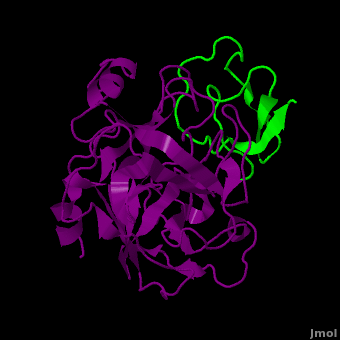Function
Proteinase (PRO) are enzymes which hydrolyze peptide bonds. They are classified by the amino acid site of their cleavage or by the pH at which they are active.
- PRO B is a serine protease[1]. For more details see Streptomyces griseus proteinase B.
- PRO A is a carboxylproteinase[2].
- PRO K is a serine protease which cleaves proteins preferentially after hydrophobic residues[3]. Calcium ions contribute to the stability of the enzyme. PRO K is active over a wide pH range and is used in molecular biology to inactivate nucleases from preparations of DNA or RNA. PRO K is used in the partial proteolysis of lactoferrin into its N- and C-lobe. The two lobes of lactoferrin have different antimicrobial and antifungal properties. PRO K can digest hair (keratin).
- Endothiapepsin is an aspartic PRO from Cryphonectria parasitica[4].
- Saccharopepsin is an aspartic PRO from yeast[5].
- Falcipain is an cystein PRO from Plasmodium falciparum[6].
For cysteine PRO from Trypanosoma cruzi see Cruzain.
3D structures of proteinase
Proteinase 3D structures

